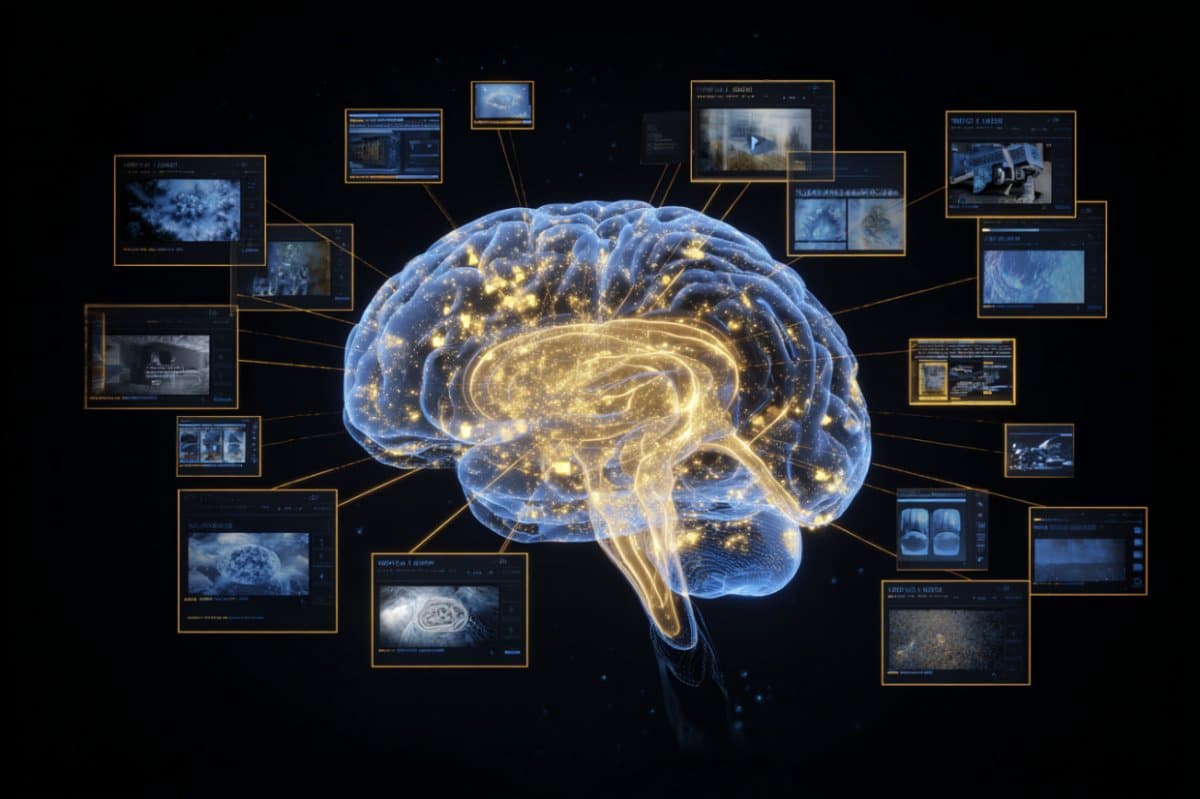Summary: A large-scale brain imaging analysis reveals that our brains can forecast what kinds of messages will go viral. Researchers found that persuasive messages consistently activate brain regions associated with reward, empathy, and social understanding, predicting both personal preferences and public appeal.
Interestingly, while emotional brain activity predicted message success in larger audiences, it did not in individuals who were scanned. These insights suggest that universal neural responses may underlie how humans collectively judge and share persuasive ideas, from public health messages to online videos.
Key Facts
- Neural Predictors: Reward and social-processing brain regions consistently forecast message effectiveness across diverse contexts.
- Universal Resonance: Emotional and mentalizing brain activity predicted which messages appealed to broader audiences.
- Cross-Context Insight: The same neural patterns were observed in responses to campaigns, trailers, crowdfunding, and YouTube content.
Source: PNAS Nexus
An analysis of brain scans from 572 people reveals that activity in brain regions linked to reward and social processing can predict how effective messages will be.
Christin Scholz, Hang-Yee Chan, Emily Falk, and colleagues pooled data from 16 functional MRI studies to explore how the human brain responds to persuasive messages across various contexts, including public health campaigns, crowdfunding sites, movie trailers, and YouTube videos.

Across these diverse settings, the researchers found that effective messages activated brain regions involved in anticipating and receiving rewards, as well as those related to understanding other people’s thoughts and feelings — a process known as mentalizing.
These brain responses predicted not only which messages were preferred by participants who underwent brain scans, but also which messages were well received by broader audiences whose brains were not scanned.
Brain activity associated with emotion predicted message effectiveness in large audiences but not in the individuals who were scanned.
These results suggest that certain aspects of our neural responses — such as whether a message prompts us to think about others or evokes emotion — may serve as universal indicators of persuasiveness across people and contexts.
According to the authors, these insights deepen our understanding of what makes a message effective and could inspire new, broadly applicable persuasion strategies.
Key Questions Answered:
A: They found that activity in brain regions linked to reward and social understanding can predict how effective a message will be across different audiences.
A: By pooling fMRI data from 16 studies involving 572 people exposed to persuasive messages ranging from health campaigns to movie trailers and crowdfunding videos.
A: The findings suggest that certain neural signatures—especially those tied to reward anticipation, empathy, and emotional response—may universally signal what makes a message resonate with large audiences.
About this neuroscience research news
Author: Emily Falk
Source: PNAS Nexus
Contact: Emily Falk – PNAS Nexus
Image: The image is credited to Neuroscience News
Original Research: Open access.
“Brain activity explains message effectiveness: A mega-analysis of 16 neuroimaging studies” by Christin Scholz et al. PNAS Nexus
Abstract
Brain activity explains message effectiveness: A mega-analysis of 16 neuroimaging studies
Persuasive communication in marketing, political, and health domains influences sales, elections, and public health.
We present a mega-analysis (a pooled analysis of raw data) of 16 functional MRI datasets (572 participants, 739 messages, and 21,688 experimental trials) assessing the neural correlates of the effectiveness of messages in individual message receivers and at scale (in large groups of message receivers who did not undergo neuroimaging).
Existing theories suggest that decision-making is driven by expected rewards and perceived social relevance associated with the expected outcomes of a given choice.
Consistent with these theories, we find that (i) brain activity implicated in reward and social processing is associated with message effectiveness in individuals and at scale across diverse domains (e.g. marketing and health campaigns); (ii) exploratory analysis further suggests language, emotion, and sensorimotor processes as pertinent to message effectiveness; and (iii) brain activity provides complementary information on message effectiveness at scale beyond self-reports provided by the same neuroimaging participants.
This study offers novel insights into the neurocognitive mechanisms underlying effective messaging, highlights a path toward greater unity and efficiency in persuasion research, and suggests practical intervention targets for message design.






